
Ghana
“In Ghana, people often eat simple fried-egg sandwiches bought from a local vendor. The sandwich is usually two eggs, a bit of tomato and onion with it. If you really have money, you buy a Nescafé or hot cocoa, too,” says Conor McCreery, a Canadian who worked as a journalist at a Ghanaian newspaper. “However kenke (sometimes spelled kenkey) is also very popular and probably more common than fried-egg sandwiches. Kenke is made from fermented maize and pounded into a paste. It is often eaten with a hot-pepper sauce,” he says. Since Ghana is an impoverished country, a sizeable portion of the population has breakfast infrequently, or not at all, McCreery says. Many Ghanians rely on one meal per day.

France
“Most people like to pick up fresh bread at their local bakery every morning. Even in the most remote areas in France, the closest bakery is never more than a 10-minute drive away,” says Jean-Patrick Le Bihan, a French ex-pat living in Boston. “There are often many types of bread to pick from, including the traditional baguette and artisan-style loaves baked during the night. Although tea is gaining popularity, most French people still drink black coffee or café au lait. The French spread their bread with a little butter and dip the bread in their bowl of coffee until it is soaked,” he says. Fresh croissants can be served with or instead of bread, although many families only purchase croissants during weekends. “It is also common to use the leftover bread from the week to make pain perdu,” a version of French toast, says Le Bihan. “The hard bread is mixed with eggs, milk and sugar, and pan-fried. Pain perdu can be topped with sugar and fruit.”
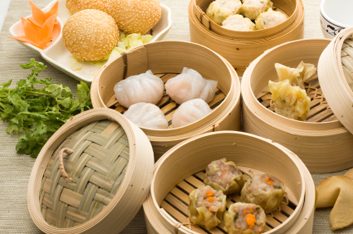
China
Visit just about any North American Chinatown on a Sunday at brunch and you’ll see families of Chinese heritage converging on dim sum restaurants. As in China, it’s a chance to socialize with family and the community, and to give Mom a break from cooking. Dim sum is a procession of small foods, such as savoury steamed or fried dumplings, pan-fried noodles, congee (rice porridge, called jook in Cantonese) and sweet pastries. On weekdays at home, Chinese people often eat homemade congee, a savoury dish, which has meat or seafood in it. Store-bought “Chinese doughnuts” can accompany the congee, much the way the French have a baguette with their café au lait.

Spain
“In the winter, I drink a glass of warm milk with cereal, sugar and Colacao (which is similar to Nesquik) in it,” says Spaniard Alfredo Garcia. “Unlike North Americans, we take a glass of milk filled with a few grains [of cereal], and not the other way around. We also eat toast with olive oil and some people rub a clove of garlic on it,” he adds. Like many other Europeans, Spanish breakfasts can also consist of toast with jam, or a croissant,” he says. And as in Italy, those in a rush will down hot coffee or drink milk, he says. However, breakfast takes a more leisurely pace in the blistering heat of the summer. “We put ice in our coffee and tea. We’ll chat with family and friends, and some people even smoke cigars,” he says.
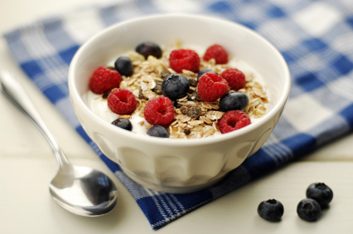
Canada
Boxed cereal is a popular breakfast choice for many Canadian households. While many eat cereal with milk or instant oatmeal on weekdays, many Canadians indulge in some combination of bacon, sausages, eggs, toast, pancakes, waffles and home fries on the weekends. However, traditions and demographics are changing, and with the influence of different cultures on Canada’s culinary landscape, some Canucks are opting for breakfast choices with an international flavour, such as foods they’ve tasted in far-flung travels or that reflect their ethnic heritage.
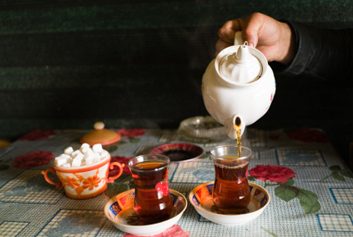
Iran
In Iran a typical breakfast consists of “a flat bread such as lavash, babary, or sangak, with a type of feta cheese and butter, served with sweetened tea,” says Goli Rassouli, a Canadian of Iranian descent. Some variations on this basic breakfast include adding eggs, boiled or baked fava beans, fresh cream, jam or honey. Rassoulie says another popular dish is “a mix of yogurt and milk, blended and sweetened, with the lavash bread soaked in it.” For a breakfast or brunch treat, Iranians eat kaleh-pacheh, a sheep’s-head-and-feet stew with a wheat-based porridge, she adds.
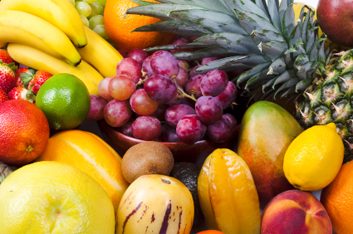
Cuba
“The breakfasts in Cuba can be amazing-lots of fresh tropical fruit, fresh juice, an omelette, bread and cheese,” says Aaron Sobeski, a Canadian who travelled extensively around the island nation as a sports journalist. “If you don’t stay at a resort, like 95 percent of the Canadians who travel to Cuba, you’ll find the food is a hundred times better,” he notes. “A few Canadians, but many more Europeans and South Americans, stay in casa particulars-rooms in people’s homes that can rented out. The host family will usually offer breakfast in the morning, and it’s so big, it keeps you full you all day,” Sobeski says.
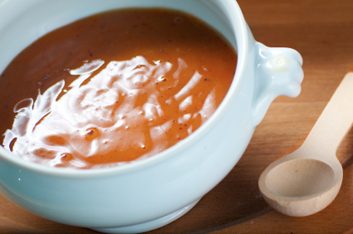
Argentina
Breakfast in Argentina is a European-inflected affair, “but with an extra sweet tooth,” says Sobeski, who also worked in this South American country as an English teacher. “They love dulce de leche [a milk caramel], which is even sweeter than caramel,” he says. A certain well-known global fast-food joint puts dulce de leche on pancakes instead of syrup, Sobeski says. “But in general, breakfast is pastries and coffee, like you’d find in France or Italy. It’s not a big meal, just something to get you going,” he adds.
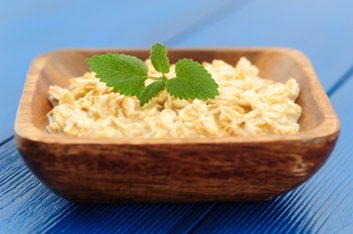
Australia
“Bread, cereal and milk are the main components of the typical breakfast for most Australians” says a University of Wollongong study. “This American-style pattern developed in the second half of the 20th century; previous to that, the consumption of English-style cooked breakfasts was much more common,” the study notes. One interesting fact from the study: “Compared to other adults, Australians over the age of 65 are more likely to eat hot cereals like porridge, eat more fruit and drink more tea and coffee than younger adults.”
Related:
Our best healthy breakfast recipes
3 steps to a better breakfast
Diet tricks from around the world
